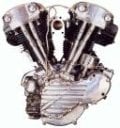Hi all,
I have questions about the two "Big Iron" graphics options that SGI had available for Onyx systems back in the day. I've read a lot about the two different systems and what they technically are capable of, but I still have some questions. All these questions relate to a hypothetical single system with a single monitor.
1) If I had a single rack with an Onyx 3xx(x) based system (not onyx2), would I see a greater performance benefit from the graphics end by using IR graphics, or IP graphics? I'm not sure how many nodes of IP could be linked together in this setup, or how many IR pipes could be used in this setup either.
2) For IP, how many pipes/nodes could be linked together to create a single system? Is it as expandable as the IR graphics?
3) For IP, does having multiple pipes/nodes linked together allow for a faster graphics system, or does it only allow more monitors, but the same as a single pipe (like a stand alone V12).
4) Is it possible to use any of the Origin 3xxx based systems and add in graphics? (either IR, or IP)
5) Is it possible for a system - like an Octane, Fuel, Tezro - to connect to an IR or IP pipe and use that instead of the built in graphics?
6) I know that the IR is capable of 8x antialiasing, but is that feature only enabled if the software is calling for it? I.E. in Maya, there is no way to force the graphics system to antialias the viewport, but would an IR system draw the graphics with antialiasing by default?
I think those are all the questions, but I'm sure I'm forgetting some. I've always been very curious about the IR and IP graphics and how they would perform in Maya or Alias Studio. I like using my Octane for these apps with the V12, but I'm always dreaming of more....
Thanks!
I have questions about the two "Big Iron" graphics options that SGI had available for Onyx systems back in the day. I've read a lot about the two different systems and what they technically are capable of, but I still have some questions. All these questions relate to a hypothetical single system with a single monitor.
1) If I had a single rack with an Onyx 3xx(x) based system (not onyx2), would I see a greater performance benefit from the graphics end by using IR graphics, or IP graphics? I'm not sure how many nodes of IP could be linked together in this setup, or how many IR pipes could be used in this setup either.
2) For IP, how many pipes/nodes could be linked together to create a single system? Is it as expandable as the IR graphics?
3) For IP, does having multiple pipes/nodes linked together allow for a faster graphics system, or does it only allow more monitors, but the same as a single pipe (like a stand alone V12).
4) Is it possible to use any of the Origin 3xxx based systems and add in graphics? (either IR, or IP)
5) Is it possible for a system - like an Octane, Fuel, Tezro - to connect to an IR or IP pipe and use that instead of the built in graphics?
6) I know that the IR is capable of 8x antialiasing, but is that feature only enabled if the software is calling for it? I.E. in Maya, there is no way to force the graphics system to antialias the viewport, but would an IR system draw the graphics with antialiasing by default?
I think those are all the questions, but I'm sure I'm forgetting some. I've always been very curious about the IR and IP graphics and how they would perform in Maya or Alias Studio. I like using my Octane for these apps with the V12, but I'm always dreaming of more....

Thanks!
_________________

 2xR14k 600MHz, 4.5GB, V12
2xR14k 600MHz, 4.5GB, V12




 2-way O300 vs. 128 way O3000 etc..
2-way O300 vs. 128 way O3000 etc..
 (Maradona)
(Maradona)











 (single-CM)
(single-CM)







